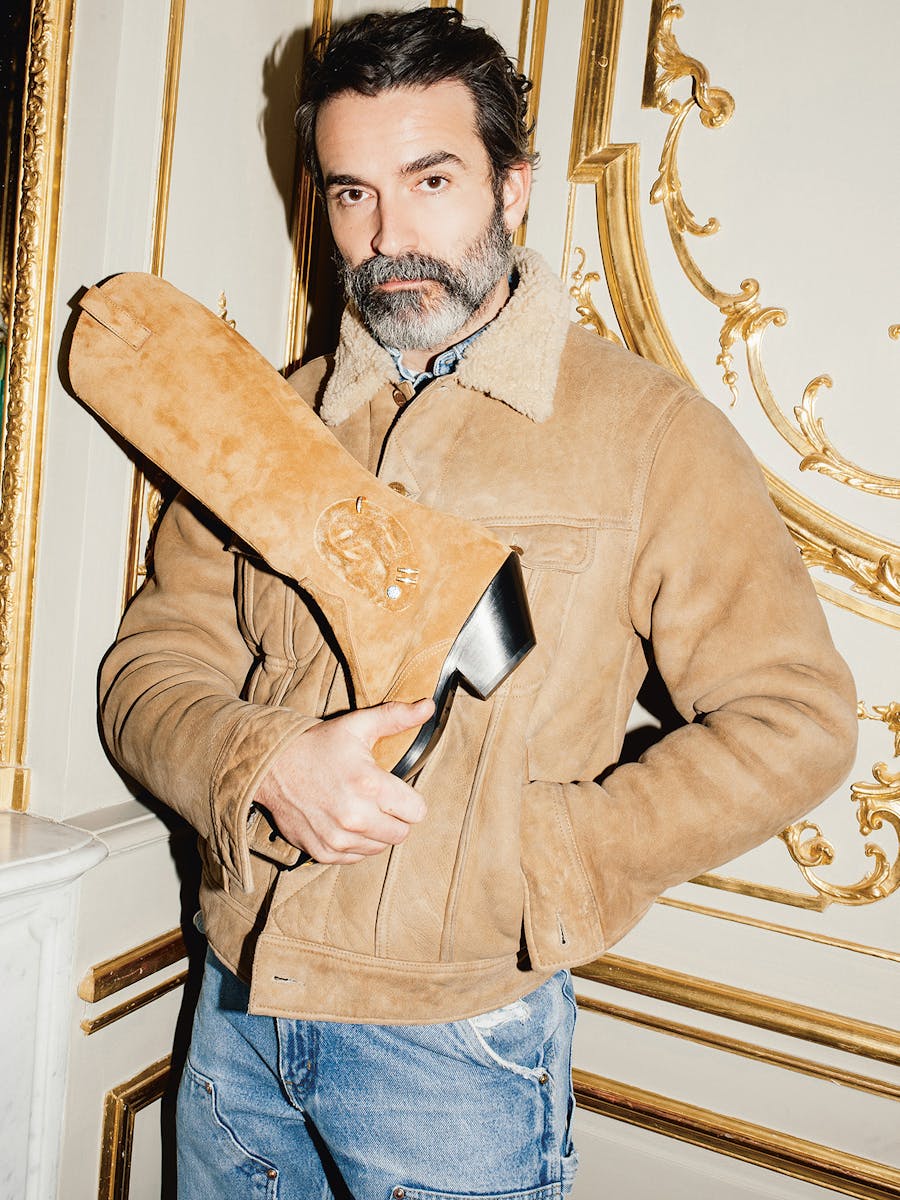The movement began slowly but surely back in the late 1960s, and as always with fashion, what attracted more attention than anything else at first was the facade; the appearance of sustainability as a statement of intent, the fashionableness of looking eco-friendly, rather than a real, less visible change to reduce pollution. It’s as though we began tackling fashion’s sustainability problem from the outside in, or, to put it less politely: we began by emptying the ashtrays while the house was burning down.
Ecology in fashion is an oxymoron; an odd couple destined to bicker until real solutions are found because what’s good for one has been, until now, precisely what’s bad for the other. This industry which has been based on offering a bit more than the market can consume (recent sanctions to combat big brands’ destruction of previous season’s overstock attest to that) continues to thrive, but it’s showing signs of moral fatigue. And ultimately most of the product, whether it’s constructed ethically in a planet-friendly way or not, still ends up in landfill. So fashion’s sustainability battle see saws between a small win here and a big loss there, while the industry searches for the solution : a way to produce and recycle every piece of clothing perfectly; and ultimately, a way for fashion to become eco-positive instead of eco-negative.
In reality the deconstruction and reconfiguration of fashion for sustainability is up to consumers. Fashion is rooted in desire. Brands are scrambling to increase sustainable practices, but it’s only when customers find it more attractive to adopt a longer term relationship and a ‘less is more’ attitude to clothes that we will begin to reach eco-positive goals. A desire for longevity rather than newness and adaptability more than change will require consumers to embrace new notions of progress, beauty and amusement in fashion. The game of clothes today with the introduction of vintage sales, clothing rental, and recycling is in the process of acquiring a new set of rules.
In the meantime, some change is taking place slowly and without any distinct prodding. In The New Yorker’s 2018 story about Rent the Runway, the U.S. fashion for hire service launched by two Harvard Business School graduates in 2008, C.E.O. Jennifer Hyman sounded upbeat when she discussed consumption figures: “Every woman has the feeling of opening up her closet and seeing the dozens of dead dresses that she’s worn only once. The average American buys sixty-eight items of clothing, eighty per cent of which are seldom worn; twenty per cent of what the $2.4-trillion global fashion industry generates is thrown away.”
I don’t know where Hyman got her figures, but they are very high. Obviously she is talking about potential Rent the Runway customers, young women in the U.S. who dress up for work in offices and events from dining out to parties, weddings and presumably glamorous vacations. That’s obviously not everybody, but it is a significant, highly visible part of fashion’s customer base.
Sixty-eight items of clothing bought per year! Just thinking about selecting, buying and finding a place in one’s closet for all that is exhausting.
Fast forward to figures covering the past 25 years from Statista on the average number of clothing items purchased by U.S. women from 1996 to 2021. Statista’s figures are much lower than Jennifer Hyman’s, but still pretty high with peak consumption at 52 items in 2001, followed by a steadily decreasing amount, down to a projection of 32 pieces for 2021 (figures released in 2017 before the start of the Covid-19 pandemic).
So perhaps American women, spurred on by increasing concerns about sustainability and suffering from fashion fatigue: ‘Do I want that $3,000 jacket or would I prefer saving money for my next vacation?’ are downsizing their wardrobes because they have found other places they prefer to spend their money.
The downward trend is encouraging, but it’s not enough. According to a 2019 study entitled “The Future of Urban Consumption in a 1.5°C World,” from the University of Leeds and Arup, a design and engineering firm, published by C40, a network of major cities committed to climate change, three items per year, or they suggest no more than eight items, by 2030 is the goal to avoid a climate disaster. This guideline for urban men, and women of all ages, is based on the Paris agreement of limiting global warming to no more than 1.5°C/2.7°F and takes into account all the aspects of producing and consuming clothes. The study estimates 10% of the world’s greenhouse gas emissions come from consumption in major cities and notes that trends which begin in big cities influence how people live generally.
The fact is, each study seems to have a slightly different yearly clothing consumption figure, but limiting clothing purchases to three new pieces per year, or even eight, would require a major downscaling of today’s bloated fashion industry by anyone’s measure. The University of Leeds/Arup study does say that eight pieces per year, presumably again for men and women of all ages and children, was the norm in cities worldwide in 2000 before fast fashion took hold.
What a long, unsustainable, excessive way we have come over the last twenty years. Let’s skip 2020 which most of us spent on Zoom at home in pyjamas. How many new pieces of clothing did you acquire in 2019, or 2018? Now think about buying no more than three new items in 2021, or 2022. I’d bet by the time this is read, many will have already exceeded the annual limit.
If luxury fashion is less the obvious culprit because of its prohibitive price and longer time spent in the closet, fast fashion is the number one trouble maker, a fact that’s not ignored by brands like H&M, the world’s second largest retailer which operates 5000 stores in over 70 countries.
H&M has been transforming its offer over the past few years to concentrate more on economy-priced basics, the brand’s true, historical calling, rather than novelty high fashion knock offs. And that’s laudable because by doing so, they are passing up on what has, until now, represented a big part of the stores’ attraction. Fast fashion can be an affordable pair of pants for someone who really needs that, or it can be one more fun dress for someone who doesn’t need anything, but for whom shopping has become a weekly pastime.
But getting back to its core business is only part of H&M’s fight to steer itself and its customers toward sustainability. For Vanessa Rothschild, who has served as the H&M Group’s global sustainability steering and development manager for the past four years, developing circular business models is key.
In a December 2020 interview with McKinsey & Co., Rothschild outlined the approach: “I define circular fashion as an industry in which resources and products stay in use for as long as possible before being recycled or regenerated into new products, again and again.” For H&M this means a three part drive to produce circular supply chains, circular products and circular customer experiences. “At the most basic level we need to produce only what we can sell,” she says.
Currently at one of H&M’s Stockholm stores, customers can watch as Looop, a new machine, transforms old garments into new ones. H&M has also invested in Renewcall and its Circulose material made from cotton recovered from worn out clothes.
Rothschild sees the future in digital enablers “that will make it much simpler for garments to flow through circular business models such as resale, rental and repair.” She projects initiatives like resale which are now sporadic will become part of the group’s core business by 2030.
Looking into the next decade, she is enthusiastic, bordering on ecstatic. “By 2030, it might be possible to make new products out of post-consumer waste—and maybe even out of carbon emissions! It might be possible to make new products without using any new natural resources at all. The sharing and resale market will become an even bigger business than the retail market. We as consumers would own a very small percentage of our wardrobe; the majority of our clothing will be shared. Fashion’s next normal will be “ownershift” rather than “ownership”. The fashion industry will become a force for change in other industries. For example, the fashion industry could champion regenerative farming and spearhead systemic changes within farming as a whole. In other words, the fashion industry will become a net-positive contributor to the environment and play a crucial role in the transformation of our society into a circular way of living.”
Whew, that’s quite a lot of sustainable possibilities to dream about. In the meantime, recycling uses a considerable amount of energy, is very time consuming and not at all equipped to transform the excessive volume of clothing in production today. A case in point sighted by Edith de Lamballerie in Good Planet Mag last September is H&M’s World Recycle Week in 2016. Although the brand did gather 1000 tons of used clothes, British newspaper The Guardian estimated that with current recycling methods it would take 12 years to recycle and that 1000 tons represents just 48 hours of the brand’s current sales, alarming figures which make buying less and opting for clothing rental and clothing resale all the more attractive.




